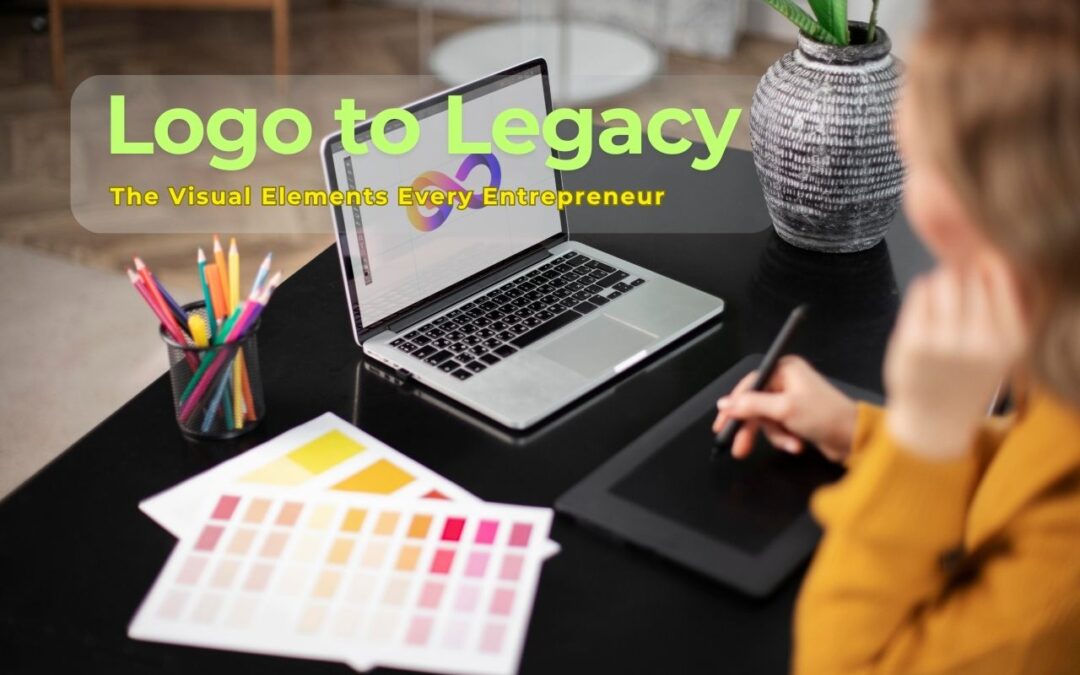When you’re building a business from scratch, your visual identity isn’t just about having a sleek logo—it’s about crafting a brand Logo to Legacy that sticks. In today’s image-driven world, visual branding plays a crucial role in how customers perceive, trust, and remember your business.
Whether you’re launching a startup, personal brand, or e-commerce store, nailing these key visual elements can mean the difference between a brand that’s forgettable and one that becomes iconic. Let’s dive deep into the components that make up a strong, lasting visual brand identity.
1. Logo: Your Brand’s First Impression
Your logo is often the first thing people see—and first impressions matter. It should be simple, versatile, and memorable. Think Nike’s swoosh or Apple’s apple. These Logo to Legacy are not only visually appealing but also communicate volumes with minimal design.
Key Characteristics of an Effective Logo:
- Simplicity: A clean, uncomplicated Logo to Legacy is easier to recognize and remember.
- Versatility: It should look good on everything from social media avatars to billboards.
- Memorability: Unique enough to stand out in a crowded marketplace.
- Timelessness: Avoid trends that will make your logo look outdated in a few years.
- Relevance: It should reflect your business values, industry, or personality.
Types of Logos:
- Wordmarks (e.g., Google): Focus on typography.
- Lettermarks (e.g., IBM): Use initials.
- Pictorial marks (e.g., Twitter): Icon or graphic-based.
- Abstract marks (e.g., Adidas): Conceptual and symbolic.
- Emblems (e.g., Starbucks): Text within a symbol or icon.
Design Process:
Start with sketches, move to digital iterations, test with focus groups, and revise based on feedback. Tools like Adobe Illustrator, Canva, and Looka can help non-designers begin the logo creation process.
2. Color Palette: Speak Without Saying a Word
Colors evoke emotions and subconscious associations. Your brand color palette is a silent but powerful communicator of your brand’s tone and personality.
Why Color Matters:
- Influences purchase decisions
- Enhances brand recognition (up to 80% according to studies)
- Differentiates you from competitors
Psychology of Colors:
- Red: Passion, excitement, urgency (ideal for food, sales)
- Blue: Trust, stability, calm (great for finance, tech)
- Green: Health, tranquility, nature (perfect for wellness, organic)
- Yellow: Optimism, warmth, clarity
- Black: Luxury, power, sophistication
Building Your Palette:
Use 3-5 core colors: one primary, one or two secondary, and one accent. Tools like Coolors, Adobe Color, and Canva’s color wheel can help you discover harmonious combinations.
Consistency:
Ensure colors are used consistently across all brand materials—digital and physical. Include HEX, RGB, and CMYK codes in your brand guide.
3. Typography: Your Brand’s Voice in Text
Typography isn’t just about choosing a font; it’s about creating a visual language for your brand.
Why Typography Matters:
- Establishes hierarchy and readability
- Conveys tone (formal, casual, fun, elegant)
- Builds recognition and trust
Font Pairing Tips:
- Choose a headline font (often bolder or more decorative)
- Choose a body font (clean and easy to read)
- Limit your palette to 2-3 fonts for clarity
Popular Font Pairings:
- Playfair Display + Source Sans Pro
- Montserrat + Open Sans
- Lato + Merriweather
Include font weights (bold, semi-bold, regular) and spacing guidelines in your brand guide to maintain consistency.
4. Brand Imagery: Show, Don’t Just Tell
Visual storytelling makes your brand relatable. High-quality brand imagery includes photography, graphics, icons, and illustrations.
Imagery Guidelines:
- Use consistent styles (filters, lighting, composition)
- Use real people to show product use and lifestyle alignment
- Avoid overused stock photos
- Use infographics to visualize complex data or value propositions
Creating Visual Assets:
- Custom graphics via tools like Canva or Adobe Creative Suite
- Professional photography for product shots and team profiles
- Icon sets aligned with your color palette and typography
5. Website Design: Your Digital Storefront
Your website is often the first interaction a potential customer has with your brand. It should showcase your visual identity seamlessly.
Must-Have Design Elements:
- Hero section with brand message and call-to-action
- Clean, mobile-responsive layout
- Consistent use of brand colors and typography
- Quality visuals (product photos, banners, icons)
Best Practices:
- Keep navigation simple
- Optimize load speed
- Prioritize user experience (UX)
- Embed brand voice into copy
Web design tools like WordPress, Webflow, Wix, and Squarespace offer customizable templates to build a brand-aligned site even without coding knowledge.
6. Packaging and Print Collateral: Tangible Branding
For physical products, packaging design is a customer touchpoint that can leave a lasting impression.
Why It Matters:
- Influences unboxing experience and customer delight
- Reinforces brand consistency
- Encourages social sharing (free marketing!)
Packaging Tips:
- Use eco-friendly, high-quality materials
- Ensure logo, colors, and fonts match digital presence
- Include QR codes for digital interaction (website, reviews, social media)
Also consider business cards, brochures, thank-you cards, and stickers as opportunities to reinforce your visual brand.
7. Social Media Aesthetics: Micro-Branding Moments
Your social feed acts as a mini-portfolio. Every post is a chance to communicate your visual identity.
Best Practices:
- Use consistent templates and color schemes
- Align visuals with your content pillars (education, entertainment, engagement)
- Highlight brand personality through captions, emojis, and tone
Tools to Maintain Aesthetics:
- Canva, Adobe Express, Later, and Planoly for planning and designing
- Use branded filters and highlight covers
- Align stories, reels, and carousels with your main feed
8. Brand Guidelines: The Rulebook for Consistency
Without documentation, even the best-designed brand visuals can get misused. That’s where brand guidelines come in.
What to Include:
- Logo variations, spacing rules, and incorrect usage examples
- Color palette with codes and contrast guidance
- Typography rules (primary, secondary fonts, sizing)
- Imagery dos and don’ts
- Tone and voice samples for captions and marketing
Brand guidelines help ensure every person or team representing your brand maintains visual consistency, strengthening recognition and trust.
9. Branded Merchandise: Turning Customers into Advocates
From mugs to tote bags, branded merchandise helps turn loyal customers into walking billboards.
Effective Merchandise Design:
- Keep it minimal and bold
- Use clever or catchy slogans
- Focus on usability (t-shirts, notebooks, water bottles)
Branded merchandise should reflect your identity while offering value to your customers. It enhances your legacy when customers want to wear or use your brand.
10. Evolving With Time: Visual Rebranding
Even the most iconic brands need to refresh their look as they grow.
Signs It Might Be Time to Rebrand:
- Outdated logo or colors
- Business pivot or new product launch
- Market feedback suggests a shift
- New competition or audience
Rebranding Tips:
- Don’t abandon legacy completely—evolve it
- Communicate clearly with your audience about the change
- Keep elements that work and modernize those that don’t
Brands like Instagram, Starbucks, and Pepsi have all undergone multiple rebrands without losing their identity. Evolution is part of legacy-building.
Final Thoughts: Crafting a Visual Legacy
A Logo to Legacy brand isn’t just what you say—it’s what people see, feel, and remember. From your logo to your Instagram grid, every visual touchpoint contributes to your business’s story and reputation.
Visual branding is about creating an emotional connection. When your visual identity is clear, consistent, and compelling, you build trust, drive recognition, and inspire loyalty. The ultimate goal? Not just visibility, but Logo to Legacy.
You don’t need a million-dollar budget to create a powerful visual identity—just intention, consistency, and the right tools.












